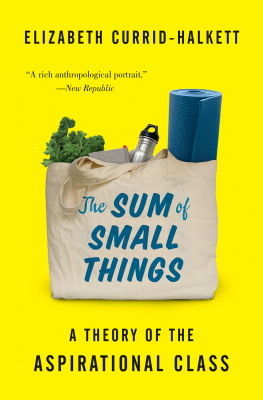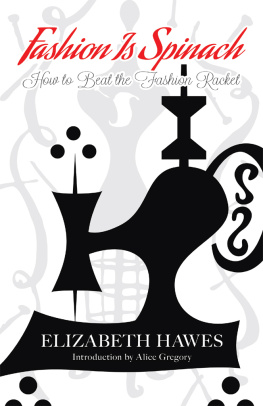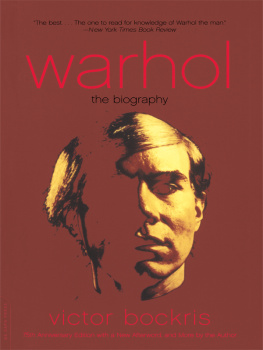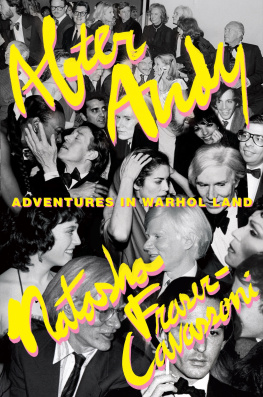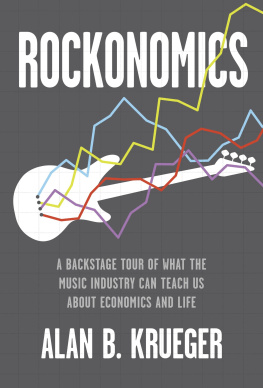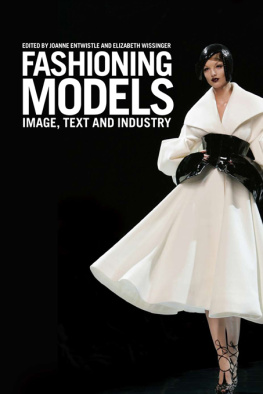Elizabeth Currid-Halkett - The Warhol Economy: How Fashion, Art, and Music Drive New York City
Here you can read online Elizabeth Currid-Halkett - The Warhol Economy: How Fashion, Art, and Music Drive New York City full text of the book (entire story) in english for free. Download pdf and epub, get meaning, cover and reviews about this ebook. year: 2020, publisher: Princeton University Press, genre: Politics. Description of the work, (preface) as well as reviews are available. Best literature library LitArk.com created for fans of good reading and offers a wide selection of genres:
Romance novel
Science fiction
Adventure
Detective
Science
History
Home and family
Prose
Art
Politics
Computer
Non-fiction
Religion
Business
Children
Humor
Choose a favorite category and find really read worthwhile books. Enjoy immersion in the world of imagination, feel the emotions of the characters or learn something new for yourself, make an fascinating discovery.
- Book:The Warhol Economy: How Fashion, Art, and Music Drive New York City
- Author:
- Publisher:Princeton University Press
- Genre:
- Year:2020
- Rating:5 / 5
- Favourites:Add to favourites
- Your mark:
- 100
- 1
- 2
- 3
- 4
- 5
The Warhol Economy: How Fashion, Art, and Music Drive New York City: summary, description and annotation
We offer to read an annotation, description, summary or preface (depends on what the author of the book "The Warhol Economy: How Fashion, Art, and Music Drive New York City" wrote himself). If you haven't found the necessary information about the book — write in the comments, we will try to find it.
Elizabeth Currid-Halkett: author's other books
Who wrote The Warhol Economy: How Fashion, Art, and Music Drive New York City? Find out the surname, the name of the author of the book and a list of all author's works by series.
The Warhol Economy: How Fashion, Art, and Music Drive New York City — read online for free the complete book (whole text) full work
Below is the text of the book, divided by pages. System saving the place of the last page read, allows you to conveniently read the book "The Warhol Economy: How Fashion, Art, and Music Drive New York City" online for free, without having to search again every time where you left off. Put a bookmark, and you can go to the page where you finished reading at any time.
Font size:
Interval:
Bookmark:

THE WARHOL ECONOMY
THE WARHOL ECONOMY
HOW FASHION, ART, AND MUSIC
DRIVE NEW YORK CITY
With a new preface by the author
Elizabeth Currid
PRINCETON UNIVERSITY PRESS
PRINCETON AND OXFORD
Copyright 2007 by Princeton University Press
Published by Princeton University Press, 41 William Street,
Princeton, New Jersey 08540
In the United Kingdom: Princeton University Press, 6 Oxford Street,
Woodstock, Oxfordshire OX20 1TW
All Rights Reserved
Second printing, and first paperback printing, with a new preface by the author, 2009 Paperback ISBN: 978-0-691-13874-9
The Library of Congress has cataloged the cloth edition of this book as follows
Currid, Elizabeth, 1978
The Warhol economy : how fashion, art, and music drive
New York City / Elizabeth Currid.
p. cm.
Includes bibliographical references and index.
ISBN-13: 978-0-691-12837-5 (hardcover : alk. paper)
eISBN 978-0-691-21323-1
1. Cultural industriesNew York (State)New York. 2. New York (N.Y.)
Social life and customs. 3. Popular cultureEconomic aspects
New York (State)New York. I. Title.
HD9999.C9473N49 2007
330.97471dc22 2007014019
British Library Cataloging-in-Publication Data is available
press.princeton.edu
R0
For Mom and Dad
THE SOURCE OF ART IS IN THE LIFE OF A PEOPLE.
ALIFE
Uncreative Destruction
In the fall of 2007, CBGB got a new tenant. The cluba small nook on the Bowery on the Lower East Side of Manhattan, with thousands of stickers papering its walls and furniture, and graffiti saturating the bathroomswas arguably one of the most significant institutions in modern music. Its role in propelling punk music into the mainstream and catapulting to fame such legendary acts as Blondie, the Ramones, Patti Smith, Sonic Youth, and the Talking Heads has been well documented; later, the club played host to bands on their way up, like Sleater-Kinney and the Dave Matthews Band. The owner and founder of CBGB, Hilly Kristal, died in 2007, less than a year after rising rents and landlord conflicts forced him to close CBGBs doors for good.
The club remains culturally iconic for music aficionados from around the world. Many saw its closing as emblematic of the broader economic and social tensions that Manhattan must confront in its modern Gilded Age. New Yorkers cynically expected high-rise condos or maybe a Starbucks to set up shop in CBGBs old space. So the announcement that John Varvatos, the New Yorkbased fashion designer, would open a boutique in spring 2008 instead, filled with his $350 trousers and $1000 bags, brought ambivalence rather than clear-cut aversion toward economic gentrification.
Varvatos may be the perfect new tenant for the old CBGB space. Sure, its a high-end luxury boutique that none of the punks who rocked out at CBGB could ever have afforded. But Varvatos loves music; he incorporates it into his advertising and his workspace, and many of his designs seem to be modern interpretations of punk and rock subcultures. Varvatoss Bowery boutique has preserved much of the ambience and spirit of CBGB, including the original walls of stickers and graffiti. And of course, he also makes great clothes. As I write this, I am wearing a pair of Varvatos trousers, and theyre by far one of the most flattering cuts Ive ever worn. When I walk down a Manhattan street, I am struck by the ingenuity and edginess of Varvatoss ads, starring music legends like Joe Perry and Iggy Pop. Varvatos is a true New York designer and he loves music: a few years ago, I interviewed him for this book, and above his office desk hung an enormous picture of Jimi Hendrix. Doesnt having Varvatos in the space actually preserve the iconic status of the club, albeit in an utterly gentrified way? Well, Im not so sure.
When CBGB was forced to shut down, it was not just the closing of a historically significant institution; it was indicative of the general changing tide of New York Citys creative economy. Thirty years ago, places like CBGBthe Mudd Club, Maxs Kansas Citywere acutely successful in the midst of the economic downturn of New York City. Paradoxically, the depressed economy fueled a creativity born of cheap loft space, abandoned buildings, and trashy neighborhoods that became artistic enclaves, thus catalyzing the creative heart of New York and, by extension, the world.
Today, such a bohemian and grassroots creative scene could never exist in New York City or any other high-end global metropolis where rents and real estate prices continue to soar. As the age-old story goes, artists move into downtrodden neighborhoods and make them interesting, creative places. But theyre gentrifiers of their own demise, because everyone knows what happens next: the middle-class college students move in, then the yuppies and investment bankers, and then the celebrities. As the rents go up, the artists and musicians move out. Throw in the exponential rise in real estate costs in New York City, and the closing of CBGB became inevitable. Then artists and musicians will do what they always do: move to another blighted neighborhood, make it attractive, and move on.
Conventional economic theory even describes this processnamed creative destruction by the great economist Joseph Schumpeter over sixty years agopositing that products, places, and ideas must be destroyed to generate a better version. Clubs may close, neighborhoods get gentrified, but creativity will find a new venue. And if you ask most economists, they would argue that the market fixes everything: good art rises to the top, and Manhattan is teeming with art galleries and music venues and remains one of the most culturally relevant hubs in the world. The market will sort out the creative economy.
But this view doesnt hold for urban economies. Heres why: part of the magic of creative neighborhoods is that they bring together artists and musicians and designers and others who feed off one another. This is an important finding in my work studying creativity, and one of the central claims of this book. But new neighborhoods are not endlessly discovered, and geographyparticularly New York Citysis inelastic; you cant just make new space. Cities are geographically constrained, which means that theres a limit to the places where artists who have been forced out can go. In the process of rapidly gentrifying artistic neighborhoods like the Lower East Side or Williamsburgthe bulldozing over of music venues and artistic residences for luxury condoswe kill the vibrant creative scene that is so crucial to our cities. Artists dont move as a posse from one neighborhood to another. Instead, they disperse, looking for less-expensive neighborhoods, and end up in far-flung parts of the city and far away from one another. Thus dies their group creativity.
The other problem for CBGB, the Lower East Side, and Manhattan as a whole is that new clubs cant spring up in the same neighborhoods, or anywhere close by. Creative destruction doesnt occur when CBGB closes and reopens in Las Vegas (as Hilly planned), or when the club is usurped by boutique hotels, high-rise condos, and Whole Foods. Some people argue that nothing cool or interesting had been going on at CBGB for a long time and that another club was bound to come along and serve the same function. In fact, the only clubs being built are ones that involve bottle service and women with obscenely expensive handbags, not ones where musicians can jumpstart their careers. The Lower East Side begins to look like the East Village, which begins to look like Soho, and by that point any creative and interesting stuff has long been replaced by Dean and DeLuca and wealthy people walking their little dogs.
Font size:
Interval:
Bookmark:
Similar books «The Warhol Economy: How Fashion, Art, and Music Drive New York City»
Look at similar books to The Warhol Economy: How Fashion, Art, and Music Drive New York City. We have selected literature similar in name and meaning in the hope of providing readers with more options to find new, interesting, not yet read works.
Discussion, reviews of the book The Warhol Economy: How Fashion, Art, and Music Drive New York City and just readers' own opinions. Leave your comments, write what you think about the work, its meaning or the main characters. Specify what exactly you liked and what you didn't like, and why you think so.


